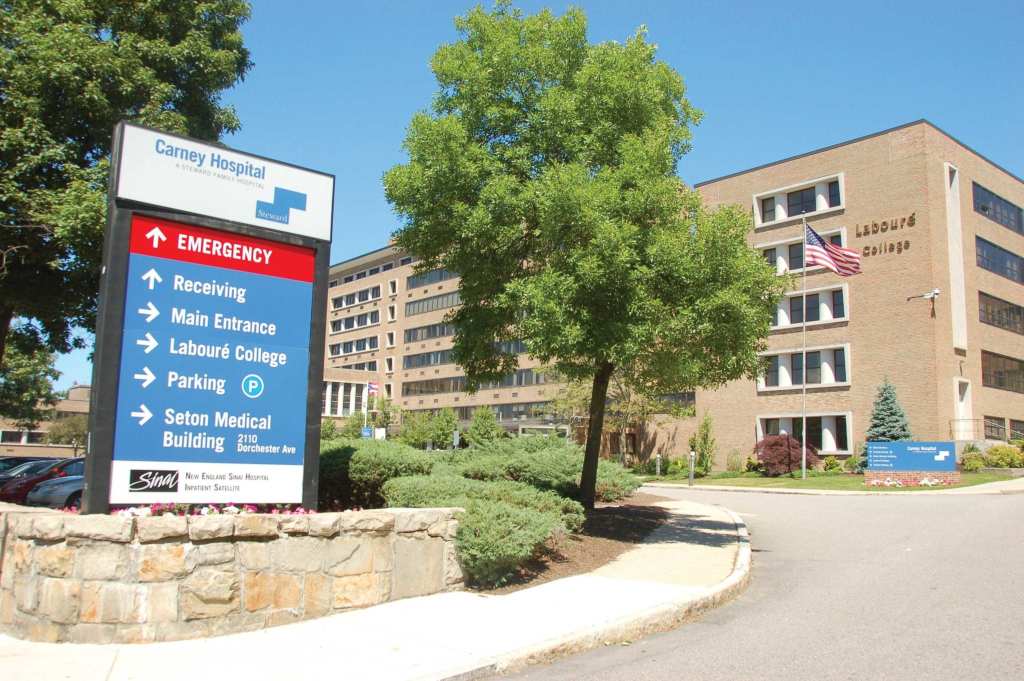“WHAT HAPPENS TO a dream deferred?” asks Langston Hughes in his timeless poem, Harlem. “Does it dry up like a raisin in the sun; or fester like a sore and then run? Does it stink like rotten meat? Or crust and sugar over—like a sugary sweet. Maybe it just sags like a heavy load. Or does it explode?”
Thousands of frontline workers, patients, and advocates had their dreams dashed, economic security threatened, and their plans for the future interrupted with the closure of Carney Hospital and Nashoba Valley Medical Center on August 31. Now residents wait in bewilderment to see what happens next.
There are a few ways this could go.
Unfortunately, what happens to a closed hospital depends on who made up its patient pool—i.e., the racial makeup and wealth of the surrounding community. And here is where structural racism comes into play.
The Sheps Center for Rural Healthcare Research at UNC Chapel Hill found that for rural counties that lost hospital care, closed hospitals in Black communities were more likely to remain abandoned or get turned into condos, apartments, or shopping malls, while in White neighborhoods, they were more likely to be converted to a new healthcare purpose.
Indeed, several examples of abandoned hospitals—festering like open sores—in Black communities exist in urban areas across the country.
In Trenton, New Jersey, the site of shuttered Mercer Hospital on Bellevue Avenue has been abandoned since 2011. In New Orleans, the over 2,000 bed Charity Hospital has sat empty since 2005, closing under dubious circumstances after Hurricane Katrina. Almost 20 years after its closure, it is slated to reopen as an “academic and research hub,” and student space for Tulane University in 2027. In Southeast Washington, DC, DC General Hospital closed in 2001, and was used as a shelter for homeless families until the shelter’s closure and demolition in 2018.
Alternatively, some communities are able to maintain health services at abandoned sites, albeit mostly outpatient, non-acute care. One common formula for repurposing the site of former hospitals is to establish a freestanding emergency department, and set up a few relatively profitable outpatient services, such as urgent care, dialysis centers, diagnostic imaging, and ambulatory surgical centers.
A decade ago in New Jersey, after a flurry of closures in the Garden State, Community Healthcare Associates—a private company specializing in creating medical arts complexes—developed a model for this. These “medical malls” were erected, perhaps opportunistically, in the wreckage of the former acute care hospital sites in what were relatively disinvested postindustrial neighborhoods. However, questions remain as to whether these services meet the specific needs of these communities, and are even accessible to under-insured, low-wealth patients.
Repurposing Steward’s recently closed sites for the continued provision of healthcare would be a relatively positive outcome. But this depends on how the sites are redeveloped. And advocates are keeping close watch on how this redevelopment takes place.
At present, Nashoba Valley’s Emergency Department may potentially be converted to an urgent care center, and the medical equipment at Nashoba and Carney is being auctioned off to the highest bidder.
Although closure and reopening is a traumatic, jarring, and harmful experience for workers and communities, permanently closing the hospital would leave a lasting scar and impose harm for generations. Therefore, the Carney site should be revamped and reopened as a full-service hospital of the highest quality.
There is precedent for reopening closed hospitals and restoring discontinued service lines. Inpatient care at North Adams Regional Hospital reopened—after a decade of being closed—and this time qualifying for Critical Access Hospital designation.
And in Santa Clara, California, the county is purchasing a hospital from HCA Healthcare for $175 million to reestablish high-level trauma care in a San Jose hospital after HCA made critical service line cuts (i.e., eliminating heart attack and stroke care) in the name of finances. Local and state policymakers need to lean in, remember their stated commitment to equity, and reimagine new possibilities.
Why is the realization of this dream of equitable healthcare in Boston so urgent? Because the epidemiological landscape demands it. We should not be able to sleep while the infant mortality rate in Hyde Park stands at 7.8 deaths per 1,000 live births (the highest of any neighborhood in the city) while nearby Roslindale has the lowest infant mortality rate (2.4/1,000) in the city. The median incomes across these neighborhoods aren’t terribly different, but the racial composition is. Under these circumstances, we should not allow the few healthcare services that service communities of color to exit without a trace.
I implore state officials to make every effort to rebuild and improve health care in Dorchester. In addition to inpatient beds, the area desperately needs an emergency department, behavioral health services, and maternal and child health services. If a child in anaphylactic shock can’t receive nearby treatment, a family member having a stroke can’t receive life-saving care, or a pre-eclamptic pregnant person can’t receive an emergency Cesarean, then what exactly is the point of having a world class health care system in your backyard?
Rather than slashing healthcare facilities, let’s augment what we already have for all communities. This moment in healthcare is a critical juncture, where all options are on the table.
Our dreams and our children’s dreams depend on it.
Alecia J. McGregor is a faculty member in the Department of Health Policy and Management at the Harvard T.H. Chan School of Public Health. She resides in Hyde Park. All views expressed here are her own and not representative of any institution with which she is affiliated.
The post Carney should reopen as a full-service hospital appeared first on CommonWealth Beacon.

